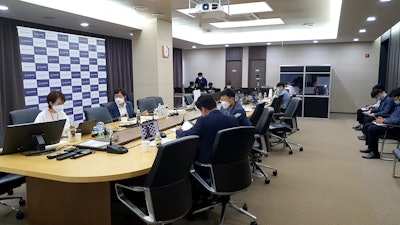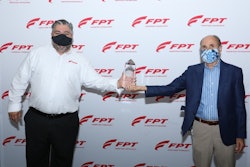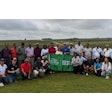
A boom in demand for hand sanitizer in South Korea since the outbreak of COVID-19 is no shocker, but the related jump in U.S. ethanol imports to the country to meet that need may be more surprising.
Even more importantly, this uptick in demand is opening doors for the U.S. Grains Council (USGC) and partners to build new partnerships to expand demand potential for ethanol across Asia -- both for industrial uses and fuel.
“The COVID-19 pandemic has altered ethanol markets around the world,” said Haksoo Kim, USGC director in South Korea. “The demand for U.S. ethanol for industrial use in South Korea has increased significantly due to high demand for sanitizing products in South Korea and throughout the region.
“Despite these short-term impacts, fuel ethanol demand remains viable for expansion in the future, and USGC is working to increase market access in individual countries in the region.”
Domestic demand for hand sanitizer in South Korea is now 2.6 million gallons per month - more than 12 times pre-pandemic levels. The country had already been importing U.S. ethanol for industrial uses like windshield wiper fluid and disinfectants, but increased demand has led to more purchases.
South Korea imported 58.9 million gallons of U.S. ethanol (20.9 million bushels in corn equivalent) for industrial uses from January to July 2020, up nearly 53 percent year-on-year. This total constitutes 55 percent market share, with competition primarily from Brazil, China and Pakistan.
USGC met virtually with KC&A, the largest U.S. ethanol importer and distributor in Asia, on Aug. 24 to discuss the obstacles and opportunities for export expansion in the region. The company has the only facility in South Korea that can rectify - or distill to remove water and other compounds - ethanol for use in sanitizing products. The company’s operations in the port city of Ulsan are also well-placed to take advantage of transshipment opportunities to other Asian countries.
Representatives from three of USGC’s offices - the headquarters office in Washington, D.C., the Southeast Asia regional office in Kuala Lumpur and the South Korea office - all participated in the meeting. USGC and KC&A discussed how to work together to introduce and expand fuel ethanol policies in the region and capitalize on logistical advantages.
“USGC and KC&A worked to increase our understanding of the changing ethanol markets in the United States, South Korea and Southeast Asia,” Kim said. “By sharing information and knowledge, we will cooperate to expand and develop ethanol markets in the region.”
While fuel demand remains down due to COVID-19, USGC has advocated for revisions in government policies that permit ethanol for fuel use and provide a role for trade.
In Indonesia, the U.S. Grains Council (USGC) worked with Growth Energy, the Renewable Fuels Association (RFA) and the U.S. Department of Agriculture’s Foreign Agricultural Service (USDA's FAS) to remove a ban on ethanol. U.S. ethanol can now enter the Indonesian market by way of pre-blended fuel, following the recent removal of a ban on pre-blended product entering the country.
In Vietnam, USGC worked with USDA's FAS to engage the Vietnamese Ministry of Industry and Trade (MOIT) and Ministry of Finance (MOF) to reduce most favored nation (MFN) tariffs, which are the lowest possible tariff a country can assess on another country with most favored nation status. While USGC and its partners pushed for a tariff reduction in line with competing products like aromatics and other petrochemical oxygenates, the tariff was eventually reduced to 15 percent for both 100 percent pure ethanol and 99 percent or less pure ethanol - the maximum reduction applied to any commodity or product during this review period.
USGC will continue to expand public and private partnerships like these to help U.S. ethanol meet the shifting demand needs in Asia and the rest of the world.
Learn more about the USGC’s work to promote ethanol in Asia.

















